A new report, “Everyone Counts” has been released in a bid to shine a light on the likely make-up of Australia’s screen industry.
The report’s co-ordinators and curators, the Screen Diversity and Inclusion Network (SDIN), said there has never been this kind of cross-screen industry diversity information. It didn’t claim to be definitive, however, issuing a caution that the project has only just begun and the first set of data won’t be all that’s needed to draw conclusions and set benchmarks.
The data set covers roles from on-screen leads to extras, producers to runners, and camera departments through to hair and make-up.
Over 2,800 people participated in the research across cast and crew on 70 Australian film and TV projects.
The resulting “Everyone Counts” report then compared representation against population statistics to determine which groups and communities were well-represented, versus those who skewed into territory dubbed as ‘over’ or ‘under’ represented.
The report said, for example, that First Nations people were “well-represented” in on-screen roles. This is based on the survey’s result indicating 6.6% of on-screen roles go to First Nations people, versus the population benchmark of 3.2%. The same logic found that First Nations people were somewhat under-represented in crew roles, with just 3.0%.
People with a disability are “vastly under-represented”, according to the report, taking up just 8.9% of on-screen roles and 5.3% of behind-the-scenes roles, compared to a population benchmark it cited as 17.7%.
Love Film & TV?
Get your daily dose of everything happening in music, film and TV in Australia and abroad.
LGBQA+ people had 17.3% of on-screen roles and 18.1% of off-screen roles, compared to a population of 11%, with the report noting this was “strong representation”.
The report labelled the group ‘LGBQA+’, noting it refers to people who self-selected ‘lesbian, gay or homosexual’, ‘bisexual’, ‘queer’, ‘asexual’ or ‘other sexual orientation’. The Everyone Project distinguishes the data it collects on sexual orientation from that of gender identity and intersex status. Despite this difference, the results for transgender, gender diverse and intersex people is, in this instance, presented alongside results for LGBQA+ people, the report’s appendix said.
People from Asian backgrounds, meanwhile, were under-represented. The report didn’t separate on and off-screen roles in this set of data, but did note that across all roles, those with an Asian background accounted for just 9.0% of roles, compared to a population of 18.2%.
European backgrounds were the reverse, with 38.0% of roles, compared to a 19.9% population benchmark. Those identifying as having an Anglo-Celtic background had 59.0% of roles overall, above its population of 51.9%.
The report said diversity and inclusion matters, and noted the data quality would improve, providing a more accurate picture of diversity in the Australian screen industry, if more people put their hands up to be counted.
Michelle Cheng, SDIN co-chair and SBS’ content industry diversity manager, said: “The SDIN is excited to launch Australia’s first glimpse into the diversity of our TV and film sector, to help us work towards benchmarking representation and better understand areas where our industry needs to improve.
“We hope these figures will spark conversation that can lead to meaningful action, so cast and crew in the screen sector will increasingly represent all Australians, including people who have traditionally been under-represented in the media.”
Kelrick Martin, SDIN co-chair and ABC TV’s head of Indigenous, added: “The release of the inaugural The Everyone Project report is a significant milestone for diversity and inclusion in our industry.
“I’m proud of the continued dedication and commitment demonstrated by both the SDIN membership and the Australian screen sector so far, and The Everyone Project will now become a regular gauge of how well we’re meeting our community’s expectations. It’s the first step in a long journey ahead for all of us.”
Organisations including the ABC, Seven Network, Nine Network, Network 10, SBS, Free TV Australia, the Australian Government, Screen Australia, Screen Queensland, Screen West, Screen NSW, Vic Screen, Screen Tasmania, the South Australian Film Corporation, Screen Canberra, Australian Directors’ Guild, AFTRS, Screen Producers Australia (SPA) and Media Reconciliation Industry Network Group (Media RING) are already registered with the program.
The full “Everyone Counts” report is available here.
More information about The Everyone Project, including how to register a screen production, can be found here.































